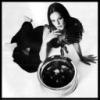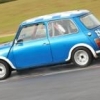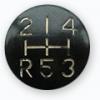Technical data (wikipedia.org):
* Cylinders: V16
* RPM: 12000
* Displacement 1487.76 cc
* Power 410.1 kW (549.9 bhp)
* Dry sump 50 to 70 lbf/in³
* 135 degree V16 alloy cylinder block and crankcase. Cast iron wet liners.
* Bore 49.53 mm (1.95 in)
* Stroke 48.26 mm (1.90 in)
* Fuel system Rolls Royce two-stage centrifugal supercharger with two 3 in (76 mm). SU carburettors. 5.7 bar maximum boost.
* Fuel Petrol/alcohol fuel
* Ignition Lucas coil, later four Lucas magnetos. One spark plug per cylinder
* Valve gear 2 valves per cylinder @ 80 degrees with twin overhead camshafts per cylinder bank, via gear train from the centre of the crankshaft. Hairpin valve springs.
* Inlet valves 1.25 in (32 mm)
* Exhaust valves 1.09 in (28 mm)
* Crankshaft Counterbalanced two piece with 8 plain bearings & 2 main roller bearings. (Later 10 plain bearings.)
In Raymond Mays' book, he claimed the following power curve with the 4.0:1 supercharger (5.7 ata):
* 100 bhp (75 kW) @ 5,000 rpm
* 175 bhp (130 kW) @ 6,000 rpm
* 250 bhp (190 kW) @ 7,000 rpm
* 335 bhp (250 kW) @ 8,000 rpm
* 412 bhp (307 kW) @ 9,000 rpm
* 525 bhp (391 kW) @ 10,000 rpm
* 585 bhp (436 kW) @ 11,000 rpm
* 600 bhp (450 kW) @ 12,000 rpm
Now... Get some realy good speakers and turn up the volume.
It was recorded in the box whilst the car made some rounds on the track. So the middle part is quite silent.
Enjoy!
wRSYTw9IBxg
After ~5:40 it switches to a onboard recording...
And that was in 1951! It sends shivers down my spine everytime I hear it.
Edited by Asphalt, 24 June 2009 - 12:26 PM.

















